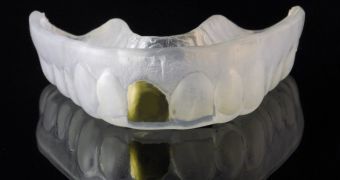According to evidence presented in a recent paper in the journal Antiquity, ancient Celts were very much preoccupied with their looks, and ready and willing to go to extreme lengths to come across as positively stunning.
Thus, the paper in question announces the discovery of a dental implant believed to date back to the 3rd century B.C. in the mouth of a fairly young woman whose body was excavated from an ancient burial site in France.
The ancient dental implant is basically an iron pin that somebody screwed into the woman's gum. Interestingly enough, evidence indicates the woman got this implant not for medical reasons, but for aesthetics.
According to Live Science, the dental implant was put in place smack at the center of the maxillary. Hence, researchers suspect that it likely supported a decorative tooth that others would have surely noticed when talking to the woman.
“In Le Chêne, the replaced tooth is a central maxillary incisor. So there, the intention was probably aesthetic,” specialist Guillaume Seguin tells the publication in an interview.
Unfortunately, no decorative tooth that might have been hold in place by this ancient implant has until now been unearthed at the archaeological site in La Chêne where the woman's body was found.
Specialists who have had the chance to examine the dental implant say that the iron pin must have been inserted either in the tooth socket, or in the root's pulp canal. Either way, chances are the procedure was rather painful.
This is yet to be confirmed, but researchers have reasons to believe the young woman lost her real tooth either due to an accidental fall, or because she was hit in the face. It is likely that it was shortly after this incident that she had a new tooth fitted to her maxillary.
If this new tooth was indeed decorative, it was probably made of gold. This theory is backed up by the fact that ancient Celts often interacted with Etruscan elites and traded with them, and the latter were quite big fans of custom-made dentition.
Writing in the journal Antiquity, archaeologist Guillaume Seguin and fellow researchers explain that the dental implant's wearer was about 20 to 30 years old at the time she passed away. Her body was found inside a tomb.
While exploring the burial site, specialists recovered several pieces of jewelry, among which a bracelet, a ring, and several brooches. Following the discovery of these artifacts, it was concluded that the woman was a member of the elite.

 14 DAY TRIAL //
14 DAY TRIAL //